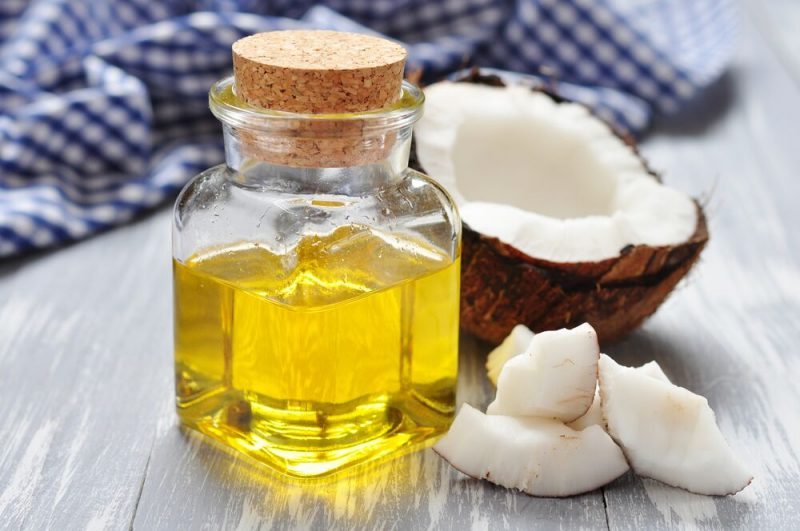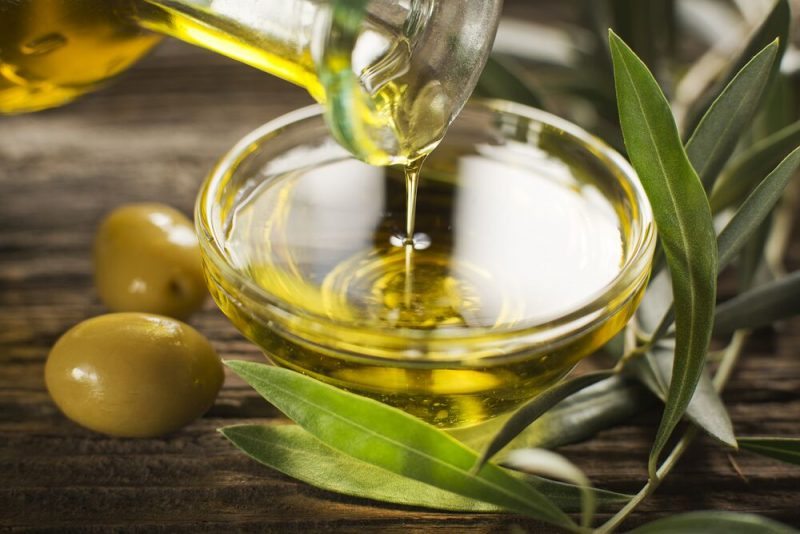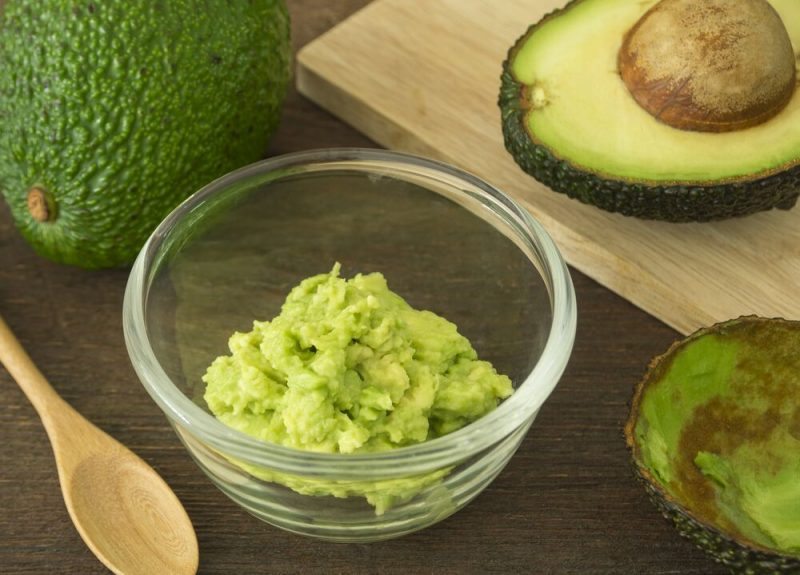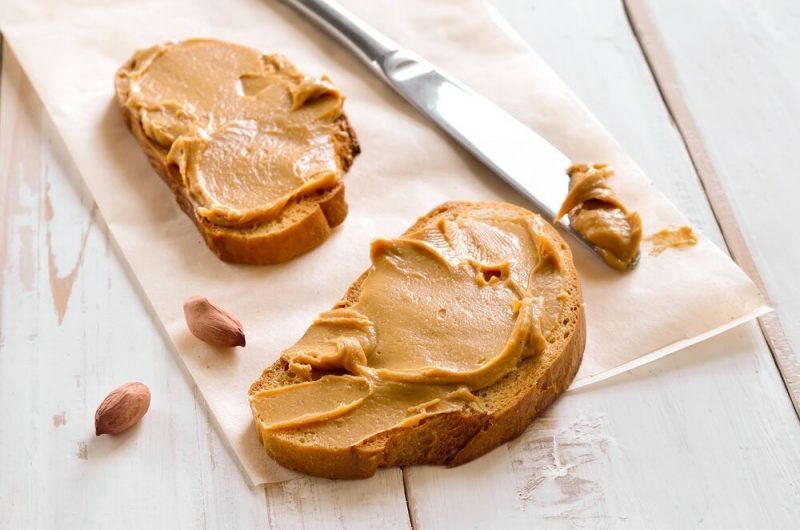If you opened up your refrigerator right now, how many sticks of butter would you find? Chances are, at least a few. Whether you use the popular dairy product as a spread, pop a teaspoon or so in a frying pan when cooking, or add it to your homemade cookies, cupcakes, and pies, it seems the popularity of butter just continues to soar. While butter is considered okay to consume in moderate amounts, it’s easy to over-do it. So if you’re trying to avoid butter, or just cut back on the fatty ingredient, these seven butter substitutes may just become your new kitchen staples.

Why Many People Avoid Butter
There are several reasons why people cut back on, or completely eliminate, butter from their diet:
It’s Very High In Fat and Cholesterol
Made from milk fat, butter is about 80 percent fat (the rest is water). While it contains a fairly moderate amount of monounsaturated fat (about 25%) along with ruminant trans fat (around 2.3%), the one that turns a lot of people off is saturated fat. Butter is about 70 percent saturated fat, a type that top health organizations (including The American Heart Association) and doctors have warned us to stay away from for decades. Since 1953 when a man named Dr. Ancel Keys published a study that compared saturated fat intake to heart disease mortality, we’ve been told that saturated fats can lead to heart disease. After extensive research, though, we now know that the controversial type of fat isn’t the evil we once thought it was.
It’s High In Calories
Along with being high in fat, butter also has a lot of calories. In fact, just one tablespoon of butter contains about 100 calories. If that doesn’t seem like all that much to you, take a minute to think about how much butter you actually consume in a day. Do you use a little in the morning to grease the frying pan for your eggs? How much do you slather on top of your accompanying slice of toast? What about lunch and dinner? Did you cook your food with butter and then add some additional pats to the top of your cooked food? Did you indulge in a pastry, cookie, or another type of baked good during the day? If so, you probably had a little more butter than you even thought. Trust me, all of those calories add up!

It’s Not That Nutritious
Sure, butter does contain some vitamins – such as A, D, E, and K – along with trace minerals. However, given the high calorie and fat content, it’s really not that nutritious.
It Contains Lactose
So far, the reasons I’ve mentioned have been elective. These next two, on the other hand, are medical necessities. If you suffer from a mild form of lactose intolerance then you may be able to eat a small amount of butter and tolerate it just fine. However, if you have a severe case of lactose intolerance then even a small amount could lead to stomach upset. Symptoms can include belching, bloating, gas, stomach cramps, diarrhea, indigestion, and fat in the stool.
Milk Allergen
If you have a milk allergy then it’s also important to tread carefully with butter. That’s because butter contains a small amount of casein, a protein found in milk that some people’s bodies can’t tolerate. Casein intolerance symptoms are similar to lactose intolerance symptoms.
Butter Substitutes For Baking
Rather than just skipping over butter when baking, you will need to find a good replacement. That’s because, whether you realize it or not, butter is a key component to making our baked goods taste amazing. It’s a leavening agent that helps make our treats light and fluffy. Along with the texture, butter also adds to the overall flavor of a dish. So if you just leave the butter out, you may wind up with a dry and bland piece of yuck! Instead, try these great butter swaps:
1) Coconut Oil
Coconut oil is truly nature’s miracle. Researchers say it benefits weight loss, improves digestion, works wonders for oral health, wards off infections, has antibacterial/antiviral/antimicrobial properties, and may help fight cancer. While coconut oil is also high in fat, it’s packed with vitamins, minerals, and other key nutrients.
In baking, you can substitute butter for coconut oil at a 1:1 ratio. That means, if your recipe calls for 1/4 cup of butter, you would simply use 1/4 cup of coconut oil instead.
While coconut oil won’t do a heck of a lot to the texture, it may slightly change the flavor of your baked goods. Whether that’s a positive or a negative thing, all depends on your taste preferences. The first time I baked a cake with coconut oil I became obsessed with the slightly coconut flavor. I personally love it, but everyone is different. So give it a try and see what you think!

2) Olive Oil
Here at Bembu, we refer to olive oil as liquid gold! That’s because the popular oil extracted from olives is packed with antioxidants, key vitamins, and minerals. It’s been known to benefit heart health, mental health, and our skin and hair!
You can swap out butter with olive oil at a 3:4 ratio, meaning you will simply use 3/4 cup of olive oil for every cup of butter called for in a recipe. Just keep in mind, though, that olive oil cannot be used to replace butter in every recipe. Since it’s a liquid, it’s not good for frostings, creams, and something like an angel food cake.
When purchasing olive oil there are two main things you want to look for. For one – make sure it’s extra virgin. This refers to the grade of oil. Many cheap oils are loaded with chemicals and/or are diluted. Second — make sure to get “cold pressed.” This refers to the extraction process. When heat is used to extract oil from olives some of the nutrients are destroyed.

3) Applesauce
Applesauce works as another wholesome butter swap. It gives your baked foods the needed liquid but doesn’t drive up the calorie or fat content. Made from apples, applesauce is actually a wonderful ingredient to add to your baked masterpieces since it’s rich in nutrients that will help keep you healthy!
Swap at a 1:1 ratio. I recommend using an all-natural applesauce that doesn’t have any added sugar, so it doesn’t bump up the sweetness factor of your cake (or whatever it is you’re making). However, if you’re baking a fall-inspired treat, it may be fun to experiment with a cinnamon flavored applesauce.

4) Pumpkin Pureé
You don’t have to bake pumpkin pie or another fall treat to sneak some pumpkin pureé into your baked goods. Surprisingly, it won’t change the flavor of your treat. It will simply slash the calories and fat without destroying the taste or texture.
Use 3/4 cup of 100% pure pumpkin pureé for every cup of butter called for in a recipe.
Here’s a little trick: Buy a boxed cake mix, mix it with one can of pumpkin pureé, and follow the baking temp/time instructions. Trust me, it’s easy and way better for you than traditional store-bought cakes. You can even pour your batter into mini muffin tins to make perfect portion sized treats.

5) Avocado
Avocados are referred to as a “superfood.” They’re among the most nutrient-dense fruits on earth, touting a long list of vitamins, minerals, and antioxidants. Plus, they’re loaded with protein, fiber, and fat. According to the United States Department of Agriculture (USDA), avocados contain around 29 grams of good-for-you fat. Along with the many ways avocados benefit our health, they also benefit our baking!
You can simply swap out butter for pureed avocado at a 1:1 ratio. While the avocado shouldn’t change the flavor of your treat, it may change the color. So a word of advice, use avocados when making something chocolate. The dark-colored ingredients will help cover up the potential green tint!

6) Greek Yogurt
Greek yogurt not only contains healthy fats that can benefit your body in many ways, it’s also high in protein. Protein is essential for muscle growth, brain function, a healthy heart, strong bones, and weight management. So why not turn a low-protein cupcake into a protein powerhouse?!
You can substitute butter for plain full-fat yogurt at a 1:1 ratio.
7) Nut Butters
Nut butters, like peanut and almond butters, are a great butter replacement. They are high in protein, healthy fats, vitamins, and minerals. Just a quick note, swapping traditional butter out for a nut butter may slightly change the taste and texture. The nutty flavor may peek through and the feel of your treat may be a bit more dense. Like I mentioned with coconut oil, it’s all a matter of preference. So try it out and see what you think!
You can substitute butter in a recipe for nut butter at a 1:1 ratio.
Butter Substitutes For Spreads
Love smearing a little butter on top of your morning toast? Why not try one of these healthier alternatives instead? I mentioned some of these swaps above in the baking section, but they work well as spreads too!

- Coconut Oil
- Olive Oil
- Nut Butters (Peanut, Almond, Hazlenut, etc.)
- Avocado
- Hummus
- Ricotta
- Cottage Cheese
- All-Natural Jams, Jellies, and Preserves
- Pesto
What Not To Use As A Substitute
For many years, people viewed margarine as the perfect butter substitute. One reason is because it looks, feels, and acts very similar to butter (although they do vary in taste). Additionally, people used to think it was a whole lot healthier than butter. We now know that isn’t the case. You see, margarine is highly processed. It’s a dairy-free replacement that’s made from inflammation-causing vegetable oils, colorants, and a number of questionable artificial ingredients. Since margarine’s main ingredient (vegetable oil) is solid at room temperature, it’s often hydrogenated. That’s what gives it its solid butter-like consistency. The hydrogenation process also turns some of those already not-so-good-for-you vegetable oils into trans fats. As I hinted at earlier, not all fats are created equal and this is the type that you want to stay away from.
Check out this video comparing butter and hydrogen to get a better understanding of the hydrogenation process. Plus, you’ll see why not all margarine products are the same!
With any food that you buy at your local grocery store, it’s extremely important to read labels and get a good feel for exactly what’s inside. In general, though, when you’re searching for the best butter substitute for baking and spreads, try to stick with the ones mentioned above!


